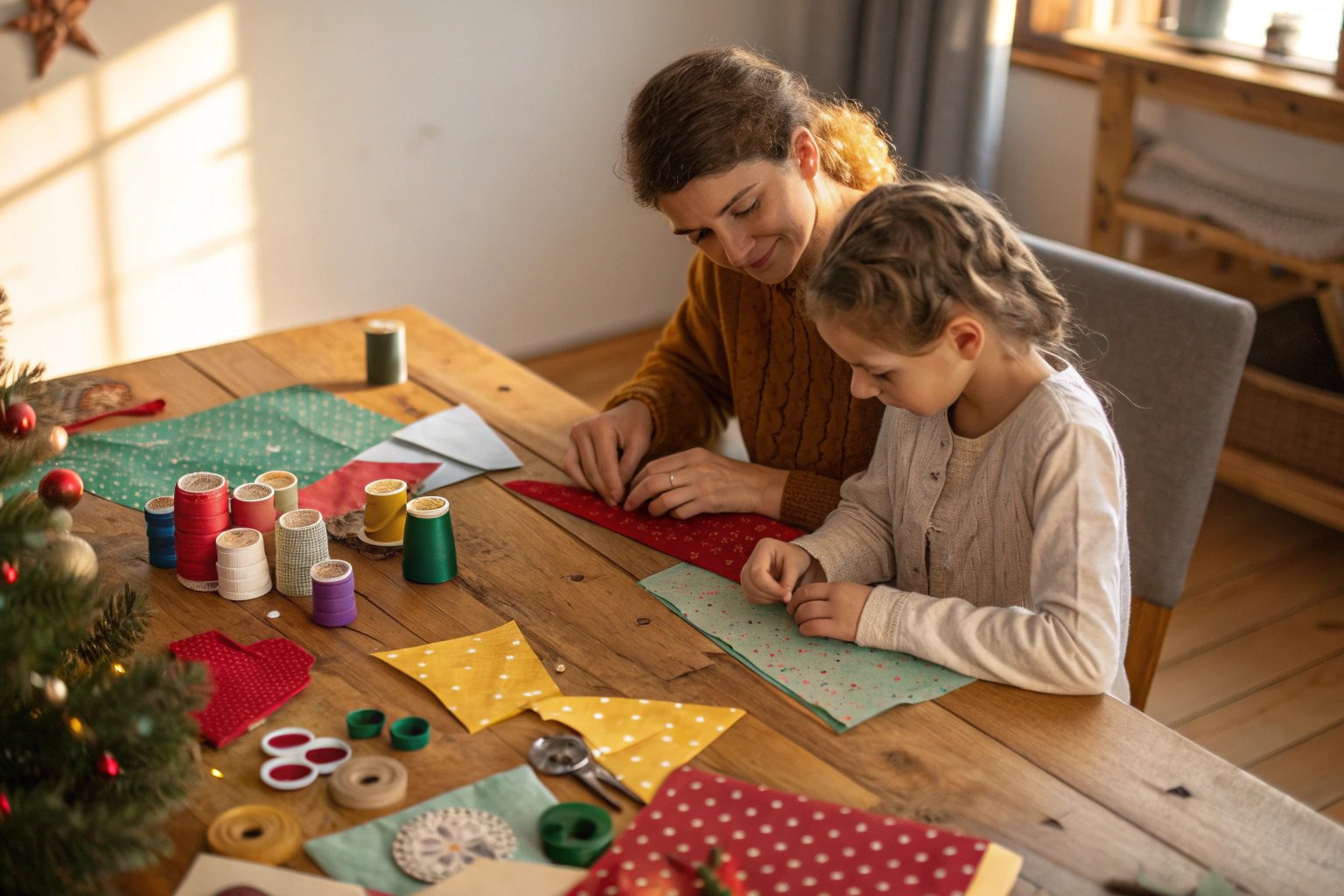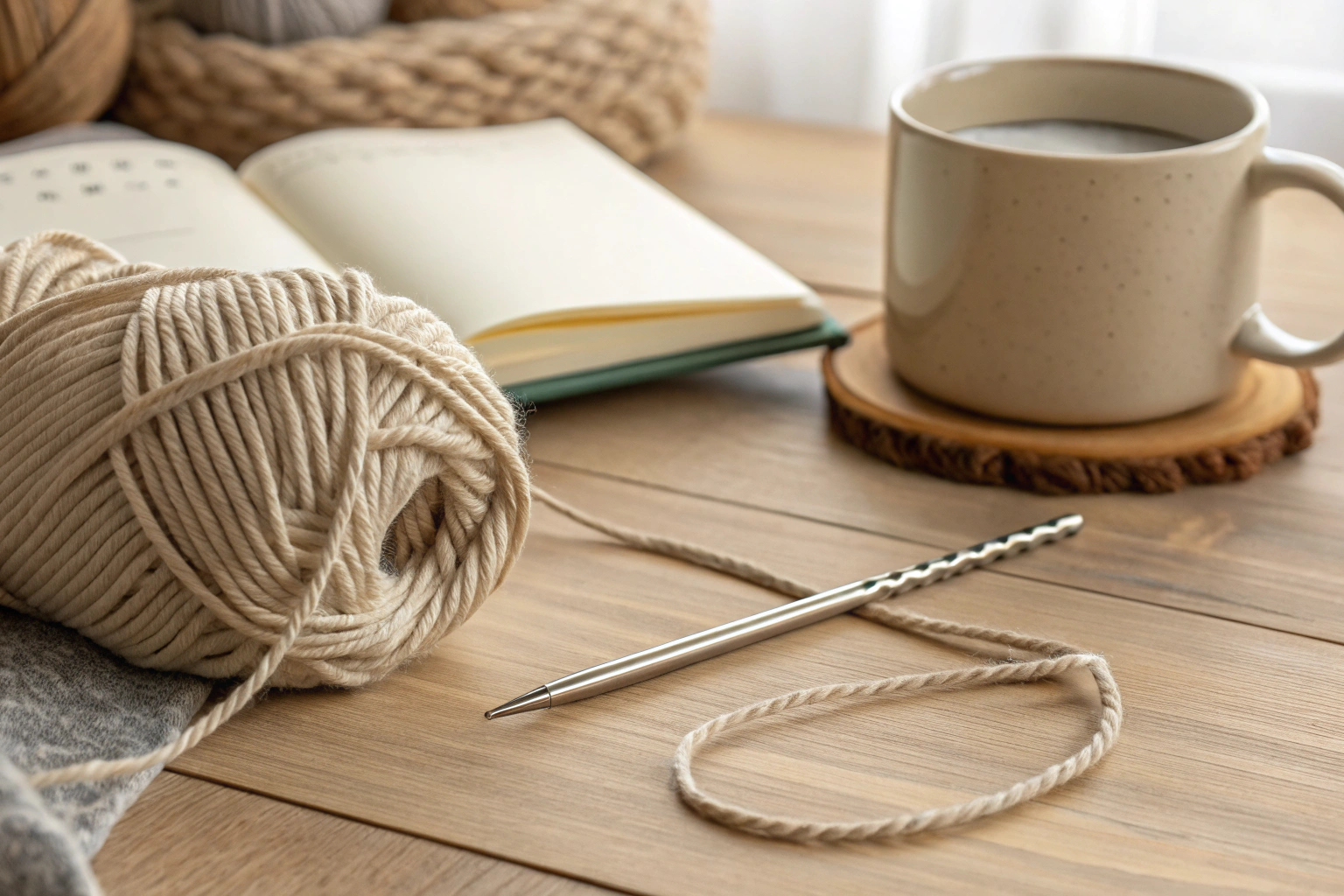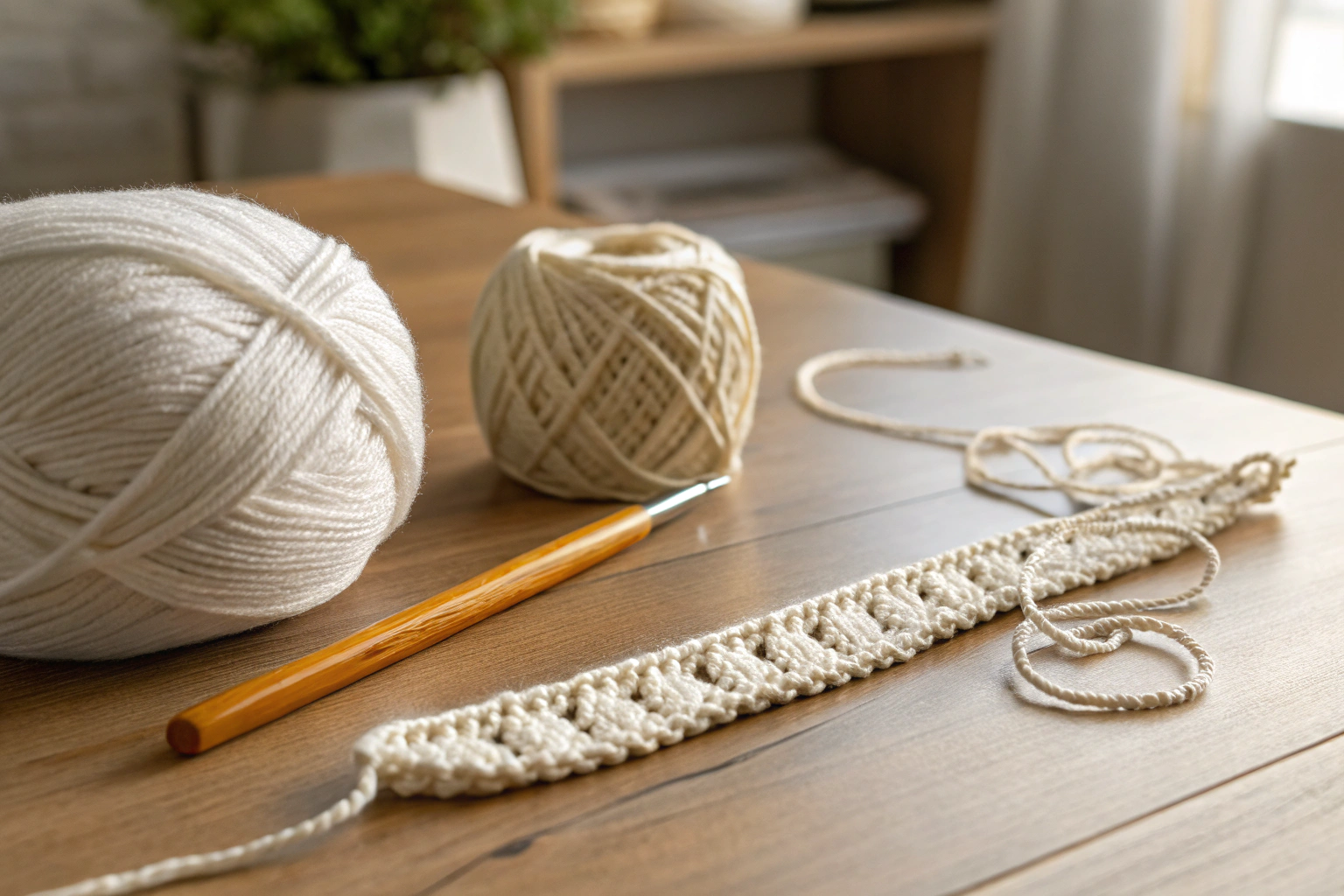How to sew a gift with children: New Year’s ideas involves creating simple, charming presents using kid-friendly sewing techniques. This activity builds fine motor skills, encourages creativity, and results in meaningful, handmade gifts. The key is choosing projects with minimal complexity and focusing on safety, such as using felt, large plastic needles, and pre-cut shapes to ensure a fun and successful crafting experience for everyone. This approach makes sewing an accessible and memorable holiday tradition.
Key Benefits at a Glance
- Safe Crafting: Prioritize projects using felt, fleece, and large plastic needles to minimize risks and ensure safety for little hands.
- Builds Key Skills: Develops children’s fine motor coordination, patience, and concentration in a fun, creative, and screen-free way.
- Meaningful Gifts: Create personalized presents like felt star ornaments or simple hand warmers that friends and family will cherish more than store-bought items.
- Low-Cost Activity: Requires only basic, inexpensive materials like felt scraps, embroidery floss, and scissors, making it a budget-friendly hobby.
- Creates Memories: Offers valuable quality time together, fostering connection and building special holiday traditions that can last for years.
Purpose of this guide
This guide is for parents, guardians, and educators looking for simple and engaging sewing projects to do with children as New Year’s gifts. It solves the common problem of finding age-appropriate crafts that are safe, hold a child’s interest, and result in a finished product they can be proud of. Here, you will find step-by-step ideas for gifts like felt ornaments and easy drawstring pouches. We’ll cover essential safety tips, common mistakes to avoid (like choosing overly complex patterns), and how to break down tasks to keep children engaged and successful.
How to sew a gift with children: New Year’s ideas
Creating handmade New Year gifts with children transforms the holiday season into meaningful family time while teaching valuable skills. After years of leading children’s sewing workshops, I’ve discovered that these projects create lasting memories far beyond the finished items themselves. This guide will show you exactly how to choose age-appropriate projects, set up a safe workspace, and complete eight specific New Year-themed gifts that children can proudly create and give.
- Handmade New Year gifts create lasting family memories and traditions
- Age-appropriate projects ensure success for children 3-12+ years old
- Simple supplies and safety measures make sewing accessible for families
- 8 specific project ideas with step-by-step instructions included
- Eco-friendly upcycling options teach sustainability while crafting
Why handmade New Year gifts create special family memories
I’ll never forget the New Year when my six-year-old niece presented me with a slightly lopsided felt star ornament she’d sewn herself. The uneven stitches and enthusiastic color choices made it infinitely more precious than any store-bought decoration. That moment crystallized why handmade gifts carry such emotional weight – they represent time, effort, and love in ways that commercial presents simply cannot match.
The New Year season provides the perfect backdrop for handmade gift creation because it naturally emphasizes fresh beginnings and personal growth. When children create something with their own hands, they’re not just making a gift – they’re developing fine motor skills, learning patience, and experiencing the deep satisfaction that comes from completing a meaningful project. The recipient receives not just the finished item, but also the story of its creation and the child’s proud investment in their work.
Essential supplies and setting up your child-friendly sewing space
Creating an effective sewing workspace for children requires thoughtful planning and age-appropriate materials. Over my years of teaching children’s sewing classes, I’ve learned that the right setup makes the difference between a frustrating experience and a joyful one. The key is organizing supplies by difficulty level while maintaining easy access to everything needed for successful project completion.
Create a safe, organized sewing corner with child-sized tools and clear storage—just like our guide for a dedicated kids’ sewing space: How to Organize a Sewing Corner for Children.
| Age Group | Essential Tools | Safety Level | Adult Supervision |
|---|---|---|---|
| 3-5 years | Plastic needles, felt, safety scissors | High safety | Constant supervision |
| 6-9 years | Blunt needles, cotton fabric, child scissors | Medium safety | Close supervision |
| 10+ years | Sharp needles, varied fabrics, rotary cutter | Standard safety | Periodic check-ins |
The physical workspace should accommodate the child’s height and attention span. I recommend using a well-lit table at the appropriate height, with comfortable seating that allows the child to work without straining. Good lighting is crucial – natural light is ideal, but a quality desk lamp works well for evening sessions. Storage containers with clear labels help children learn organization while keeping supplies easily accessible.
- Choose a well-lit workspace with comfortable seating
- Organize supplies in labeled containers by project type
- Set up a dedicated cutting area away from children’s reach
- Prepare first aid kit with bandages and antiseptic
- Create storage system for works-in-progress
Temperature control and ventilation matter more than many realize. Children work best in comfortable environments, and proper air circulation prevents stuffiness during longer sessions. I always ensure the workspace has adequate ventilation, especially when using fabric glues or markers for decorating projects.
Safety first: My tested rules for sewing with young ones
Safety considerations must be paramount when introducing children to sewing tools. Through my experience, I’ve encountered minor accidents that could have been prevented with proper precautions. The most common issues involve needle pricks and small cuts from scissors, both easily preventable with appropriate supervision and tool selection.
- Never leave sharp tools within reach of unsupervised children
- Establish clear boundaries for tool use and workspace areas
- Teach proper needle and scissors handling before starting projects
- Keep first aid supplies easily accessible during all sessions
- Set age-appropriate time limits to prevent fatigue and accidents
My safety protocol begins with demonstrating proper tool handling before every session. Children need to understand that sewing tools require respect and attention. I’ve found that creating a simple ritual around tool use – such as a safety reminder song or checklist – helps reinforce these important habits. Young children especially benefit from clear, consistent rules that they can easily remember and follow.
- Use magnetic pin cushions to prevent scattered pins
- Choose contrasting thread colors for easy visibility
- Start each session with a safety reminder routine
Age-appropriate New Year sewing projects
Matching projects to developmental abilities ensures success and maintains enthusiasm throughout the crafting process. Children’s fine motor skills, attention spans, and cognitive abilities vary significantly by age, and choosing inappropriate projects leads to frustration for both child and adult. The key is understanding what each age group can realistically accomplish while still feeling challenged and proud of their work.
For beginners, start with simple zipper pouches—they’re quick, satisfying, and teach core skills like straight stitching and zipper installation: How to Sew a Zipper Pouch.
Simple projects for little hands (Ages 3-5)
Preschoolers bring tremendous enthusiasm to sewing projects, but their fine motor skills are still developing. I’ve found the most success with projects that emphasize large movements and simple concepts. Felt works beautifully for this age group because it doesn’t fray, holds its shape well, and comes in bright colors that capture their attention.
- Cut felt star shapes using cardboard templates
- Help child punch holes around edges with large needle
- Guide simple running stitch around perimeter
- Stuff lightly with cotton batting or fabric scraps
- Add ribbon loop for hanging ornament
The felt star ornament remains my go-to project for this age group because it combines simple techniques with impressive results. I remember one four-year-old who was so proud of her purple and gold star that she insisted on making five more for her entire family. The project took three short sessions, but her sense of accomplishment lasted all year.
- Use bright, contrasting colors to maintain interest
- Pre-punch holes for easier threading
- Allow 20-30 minutes maximum per session
Drawstring treat bags offer another excellent option for this age group. Using pre-cut fabric rectangles, children can practice simple running stitches while creating functional gifts. The bags work perfectly for holding homemade cookies or small New Year treats, giving children a practical understanding of how their sewing skills create useful items.
Growing skills projects (Ages 6-9)
Elementary-aged children can handle more complex projects while developing greater independence in their sewing skills. This age group benefits from projects that introduce new techniques gradually while building on previously mastered skills. They can work for longer periods and take pride in more sophisticated finished products.
| Project | Skills Learned | Time Required | Difficulty |
|---|---|---|---|
| Countdown Banner | Basic stitching, measuring | 2-3 hours | Beginner+ |
| Lucky Symbols | Appliqué, stuffing | 1-2 hours | Intermediate |
| Simple Tote Bag | Seams, handles | 3-4 hours | Intermediate |
| Fabric Bookmarks | Decorative stitching | 1 hour | Beginner+ |
The countdown pocket banner has become particularly popular in my workshops because it combines practical math skills with creative expression. Children create fabric pockets numbered 1-31 for December, filling each with small treats or activities. One eight-year-old designed hers with different colored pockets for each week, demonstrating the creative problem-solving this age group brings to projects.
Stuffed lucky symbols introduce appliqué techniques while maintaining the manageable size that works well for developing skills. Children can choose their own lucky symbols – from traditional horseshoes to personal favorites like cats or stars. This personalization keeps them engaged while they practice new stitching techniques.
Simple tote bags represent a significant step up in complexity, introducing seam construction and handle attachment. The bags serve as excellent New Year gifts for teachers, grandparents, or friends, giving children a sense of creating truly useful items. I’ve seen children beam with pride when recipients use their handmade bags for grocery shopping or library visits.
Creative challenges (Ages 10+)
Pre-teens and teenagers can tackle sophisticated projects that approach adult-level complexity while still benefiting from guidance and encouragement. This age group often has strong opinions about design and function, making personalization particularly important for maintaining their interest and investment in the project.
- Fabric Calendar: Machine sewing, binding, pocket construction
- Table Runner: Measuring, hemming, decorative topstitching
- Journal Covers: Pattern making, interfacing, closure systems
The personalized fabric calendar project challenges older children to work with precise measurements while creating something genuinely useful. They can design monthly themes, incorporate family photos, and add functional elements like pockets for important papers. One eleven-year-old created a calendar featuring her family’s pets for each month, complete with birthday reminders and vet appointment pockets.
- Encourage personal design modifications
- Introduce new techniques gradually
- Allow for creative problem-solving
Table runners with pockets for New Year wishes combine decorative and functional elements in ways that appeal to this age group’s desire for sophistication. The projects require careful measuring, straight seam construction, and decorative elements that showcase their developing aesthetic sense. Journal covers offer similar complexity while creating deeply personal gifts that recipients treasure for years.
8 New Year-themed gift ideas to sew together
These eight projects represent my most successful New Year sewing activities, tested through years of workshops with children of various ages. Each project offers opportunities for personalization while teaching specific skills that build upon each other. The projects range from simple to complex, ensuring options for every family situation and skill level.
Personalized pajamas make heartfelt family gifts—sew matching sets with elastic waistbands for comfort and ease: Family Project: Sewing Pajamas Together.
| Project | Age Range | Materials | Time | Difficulty |
|---|---|---|---|---|
| Lucky Symbol Sachet | 6+ | Felt, herbs, ribbon | 1 hour | Easy |
| Countdown Calendar | 8+ | Fabric, pockets, numbers | 3 hours | Medium |
| Resolution Journal Cover | 10+ | Canvas, elastic, decoration | 2 hours | Medium |
| Year-Number Ornament | 5+ | Felt, stuffing, embroidery | 1 hour | Easy |
| Time Capsule Pouch | 7+ | Sturdy fabric, drawstring | 1.5 hours | Easy |
| Party Hat | 4+ | Felt, elastic, sequins | 45 minutes | Easy |
| Gratitude Pillow | 9+ | Cotton, stuffing, fabric markers | 2.5 hours | Medium |
| Upcycled Calendar | 6+ | Old materials, fabric scraps | 2 hours | Easy |
The Lucky Symbol Sachet introduces children to the concept of meaningful gift-giving while teaching basic construction techniques. Children choose their recipient’s favorite scents and lucky symbols, creating personalized items that carry both practical and emotional value. The Resolution Journal Cover helps children understand goal-setting while creating a beautiful, functional gift that encourages the recipient’s personal growth throughout the year.
Year-Number Ornaments commemorate the specific year while teaching basic embroidery or appliqué techniques. These ornaments become treasured keepsakes that families can display year after year, creating a visual timeline of the child’s developing skills. The Time Capsule Pouch encourages reflection on the past year while looking forward to the future, combining practical sewing skills with meaningful family traditions.
Party Hats bring immediate joy and celebration to the crafting process, offering instant gratification that keeps younger children engaged. The Gratitude Pillow combines advanced sewing techniques with emotional intelligence, as children create spaces for family members to record things they’re thankful for throughout the year. The Upcycled Calendar project teaches sustainability while creating practical gifts, showing children how creativity can transform discarded materials into treasured items.
Lucky symbol sachets and ornaments
Traditional New Year lucky symbols vary across cultures, but they share common themes of prosperity, health, and happiness. I’ve adapted these symbols into simple sewing projects that children can personalize while learning about different cultural traditions. The sachets serve double duty as decorative items and aromatherapy elements, filling homes with pleasant scents while symbolizing good fortune for the coming year.
“Button Star Ornaments or Keyrings (they make lovely DIY Christmas Ornaments too) … Stand back and admire and make someone very happy when you give them this cute little Button Christmas Star Ornament!”
— Red Ted Art, January 2025
Source link
The construction process begins with creating templates for traditional symbols like horseshoes, four-leaf clovers, or stars. Children trace these shapes onto felt, cut them carefully, and then learn to create small running stitches around the perimeter. The filling mixture I’ve perfected combines dried lavender, rice for weight, and a few drops of essential oil for lasting fragrance. One seven-year-old created an entire set of different colored horseshoes for her extended family, each filled with a different scent to match their personalities.
Personalized calendar covers
Calendar covers transform ordinary yearly planners into cherished personal items while teaching children about measurement, planning, and decoration techniques. I began making these covers after realizing how much families appreciated practical gifts that showed thought and effort. The covers protect calendars from wear while adding beautiful, personalized elements that make planning and organizing more enjoyable.
The construction process starts with measuring standard calendar dimensions and adding appropriate seam allowances. Children learn to create patterns, cut fabric accurately, and construct simple pockets or flaps for added functionality. Decoration techniques range from simple appliqué for younger children to more complex embroidery or fabric painting for advanced sewers. One ten-year-old created a calendar cover featuring her family’s birth months in different colors, with small pockets to hold birthday reminder cards.
Recycled and upcycled New Year projects
Teaching children about sustainability through creative reuse has become one of my favorite aspects of sewing instruction. Children often express amazement when they realize that items destined for disposal can become beautiful, functional gifts. These projects combine environmental awareness with practical sewing skills while demonstrating that creativity can transform anything into something valuable.
- Old t-shirts become drawstring bags
- Outgrown jeans transform into pocket organizers
- Fabric scraps create patchwork ornaments
- Gift wrap becomes reusable fabric bags
The excitement children show when discovering upcycling possibilities never fails to inspire me. I remember one workshop where a shy eight-year-old brought her father’s old work shirt, convinced it was beyond saving. By the end of our session, she had transformed it into a tool organizer with multiple pockets, complete with appliqué decorations. Her father’s reaction when she presented it as a New Year gift brought tears to everyone’s eyes.
“Felt Embroidered Coffee Cup Cozies — For kids who like to sew and embroider, these look fun to make!”
— How Wee Learn, February 2025
Source link
- Textile waste accounts for 5% of landfill space
- One upcycled project can save 2-3 items from disposal
- Children retain environmental lessons 3x longer through hands-on activities
These projects naturally lead to discussions about consumption, waste, and environmental responsibility. Children begin to see potential in items they previously would have discarded, developing a mindset that serves them throughout their lives. The skills they learn through upcycling – problem-solving, creativity, and resourcefulness – extend far beyond sewing into many areas of life.
Memory quilts from last year’s clothes
Creating memory patches from outgrown clothing or meaningful fabrics provides a tangible way to preserve important memories while teaching basic patchwork techniques. This tradition has become particularly meaningful for families dealing with loss or major life changes, as the quilting process provides comfort while creating lasting keepsakes.
My simplified quilting approach makes this traditionally complex craft accessible to young children. We focus on basic squares and rectangles, using simple running stitches to join pieces together. The emotional aspect often surprises children – they don’t expect to feel so connected to fabric pieces, but handling clothing that holds memories creates powerful moments of reflection and sharing.
Fabric gift wraps and bags
The Japanese art of Furoshiki provides the inspiration for creating reusable fabric gift wrapping that serves as both presentation and additional gift. Children quickly grasp the environmental benefits while learning that beautiful packaging doesn’t require waste. The wrapping cloths can be used repeatedly, carrying the giver’s thoughtfulness forward through many occasions.
Simple fabric gift bags offer an easier introduction to this concept for younger children. Using basic rectangular construction, children create bags that recipients treasure long after the original contents are forgotten. The bags serve for library books, travel items, or storage, extending the gift’s usefulness indefinitely.
Turning sewing time into learning opportunities
Sewing sessions naturally create opportunities for learning across multiple subjects without feeling like formal education. Children absorb information more readily when engaged in hands-on activities, making craft time ideal for introducing concepts about history, culture, mathematics, and science. The key is recognizing these moments and gently expanding on children’s natural curiosity.
Mathematical concepts emerge naturally through measuring fabric, calculating seam allowances, and planning project layouts. Historical discussions arise when exploring the origins of different stitching techniques or the cultural significance of various symbols and colors. Scientific principles appear when discussing how different fibers behave or why certain thread types work better for specific applications.
Exploring New Year traditions through crafting
Using sewing projects to introduce children to global New Year traditions creates meaningful cultural education while maintaining engagement through hands-on activities. I’ve found that children retain cultural information much better when they create something related to the tradition rather than simply hearing about it.
| Culture | New Year Tradition | Sewing Project Adaptation | Symbolic Meaning |
|---|---|---|---|
| Chinese | Red envelopes (hongbao) | Fabric money pouches | Good fortune, prosperity |
| Scottish | First-footing gifts | Small gift bags | Good luck for coming year |
| Spanish | 12 grapes at midnight | Grape-shaped sachets | Wishes for each month |
| Japanese | Daruma dolls | Felt goal-setting dolls | Perseverance, goal achievement |
When we create fabric versions of Chinese red envelopes, children naturally ask about the significance of the color red in Chinese culture, leading to rich discussions about symbolism and tradition. Creating Scottish first-footing gift bags opens conversations about hospitality and community traditions. These projects become bridges between cultures, helping children understand that while traditions vary, the underlying values of hope, prosperity, and community remain remarkably consistent.
Presentation ideas: Making the gifting special
The presentation of handmade gifts deserves as much attention as their creation, particularly for New Year gifts that carry special significance. I’ve learned that thoughtful presentation enhances the recipient’s appreciation while teaching children about the importance of care and consideration in gift-giving.
Custom wrapping techniques using fabric scraps or handmade papers extend the creative process while reducing waste. Children can design gift tags that complement their sewn items, creating cohesive presentations that demonstrate attention to detail. The anticipation and excitement of revealing handmade gifts creates memorable moments for both giver and receiver.
Creating custom tags and cards
Handmade gift tags and cards provide the perfect finishing touch for sewn New Year gifts while offering additional creative opportunities for children. These small projects often become as treasured as the gifts themselves, serving as keepsakes that preserve the memory of the giving occasion.
Simple fold-and-cut techniques create elegant cards from basic materials, while fabric scraps can be incorporated to coordinate with the sewn gifts. Children learn to express their feelings through written messages, developing communication skills alongside their crafting abilities. The personal touch of handwritten New Year wishes adds emotional value that commercial cards cannot match.
Building lasting New Year traditions through crafting
Establishing annual crafting traditions creates anticipation and continuity that strengthens family bonds while preserving memories. I’ve worked with families who have maintained sewing traditions for over a decade, watching children develop from tentative beginners to confident creators who eventually teach younger siblings and cousins.
Documentation plays a crucial role in preserving these traditions. Photographs of each year’s projects create visual timelines that families treasure, showing not only skill development but also changing interests and personalities. Some families create special albums or scrapbooks dedicated to their annual crafting adventures, including notes about what each child learned or particularly enjoyed about each project.
Troubleshooting common challenges
Even with careful planning, sewing sessions with children present predictable challenges that can be managed with appropriate strategies. Frustration, mistakes, and varying attention spans are normal parts of the learning process, requiring patience and flexibility from supervising adults.
| Challenge | Quick Solution | Prevention Strategy |
|---|---|---|
| Tangled thread | Cut and restart with shorter length | Use 18-inch maximum thread lengths |
| Frustrated child | Take a break, switch to simpler task | Match project difficulty to current mood |
| Uneven stitches | Embrace imperfection, focus on effort | Demonstrate that handmade means unique |
| Lost interest | Change activity or add music | Keep sessions under 45 minutes |
The most important lesson I’ve learned is that perfection should never be the goal when sewing with children. The process of creating, learning, and spending time together matters far more than achieving professional-quality results. Children need to understand that mistakes are part of learning, and that handmade items are valuable precisely because they show human effort and care.
- DO praise effort over perfection
- DON’T take over when child struggles
- DO have backup simple activities ready
- DON’T schedule during tired times
- DO celebrate small victories
Managing time and expectations during the holiday season
Holiday schedules often create pressure to complete projects quickly, but rushing defeats the purpose of creating meaningful family experiences. I’ve developed strategies for managing realistic timelines while maintaining the joy and relaxation that should characterize creative activities.
- Plan projects 2-3 weeks before New Year deadline
- Break complex projects into 30-45 minute sessions
- Prepare all materials in advance to maximize crafting time
- Build in buffer time for mistakes and learning moments
- Focus on enjoyment rather than perfect completion
The key is remembering that unfinished projects still provide value through the time spent creating together. Some of my most meaningful workshop memories involve projects that were never completed but generated wonderful conversations, laughter, and learning moments. The goal is connection and skill-building, not necessarily finished products.
- Ages 3-5: 15-20 minutes maximum attention span
- Ages 6-9: 30-45 minutes optimal session length
- Ages 10+: 60-90 minutes possible with breaks
Preserving and displaying children’s handmade gifts
Thoughtful preservation and display of children’s handmade items honors their effort while creating lasting reminders of special family moments. I’ve developed systems for helping families showcase these treasures without overwhelming their living spaces or creating storage burdens.
Photography provides the most practical preservation method, capturing not only finished products but also the creation process. Date labeling and context notes help preserve the stories behind each item, information that becomes increasingly precious as years pass. Creative display solutions like rotating galleries or seasonal showcases keep items visible while managing space constraints.
For project instructions and variations, explore the basic sewing wiki and see the crafting activities page from the CDC.
Conclusion: The gift that keeps giving
The true value of creating New Year gifts with children extends far beyond the finished products themselves. These shared experiences build confidence, teach valuable skills, and create memories that last lifetimes. Children who learn to create with their hands develop problem-solving abilities, patience, and pride in their accomplishments that serve them throughout their lives.
Starting this tradition requires only basic supplies, a willingness to embrace imperfection, and commitment to prioritizing process over product. The investment of time and attention pays dividends in stronger family relationships, developed skills, and the deep satisfaction that comes from creating something meaningful together. This New Year, consider beginning your own family tradition of handmade gift creation – the memories you make will become treasures that outlast any store-bought present.
Frequently Asked Questions
Fun New Year’s themed sewing projects for children include creating festive party hats, countdown banners, or simple plush fireworks using colorful fabrics. These projects can incorporate sparkling materials to capture the holiday spirit and encourage creativity. For added fun, integrate basic measurements like learning how to measure waist for men when making adjustable New Year’s belts as a family activity.
Always supervise children closely when using needles, scissors, or sewing machines, and opt for child-safe tools like plastic needles or blunt scissors. Teach them proper handling techniques and keep small parts like buttons out of reach for younger kids to prevent accidents. For projects involving measurements, such as how to measure waist for men in custom accessories, ensure safe practices to make the experience enjoyable and secure.
For younger children, start with no-sew projects using glue or simple hand-stitching, while older kids can handle basic machine sewing or more complex patterns. Adjust the complexity by breaking tasks into small steps and providing guidance as needed to build confidence. When incorporating elements like how to measure waist for men in themed apparel projects, tailor the instructions to their skill level for a positive New Year’s crafting session.
Easiest projects include sewing simple felt ornaments, New Year’s resolution pouches, or basic drawstring bags using pre-cut fabrics and minimal stitches. These require few tools and can be completed quickly, making them ideal for beginners. To add educational value, teach simple techniques like how to measure waist for men when customizing bag sizes, keeping the focus on fun and achievement.
Make it a yearly event by choosing a new themed project each New Year’s, such as sewing family banners or personalized gifts, and document the process with photos for memories. Involve everyone in planning and execution to foster bonding and creativity over time. Incorporate practical skills like how to measure waist for men in tradition-building projects, such as crafting annual family accessories, to enhance the tradition’s appeal.
Opt for glittery fabrics, metallic threads, and felt in colors like gold, silver, and black to evoke New Year’s excitement, ensuring they are easy to handle for kids. Materials like cotton blends and fleece are durable and child-friendly for projects like hats or decorations. When projects involve sizing, such as learning how to measure waist for men in festive sashes, choose stretchy fabrics for forgiving fits and fun results.





